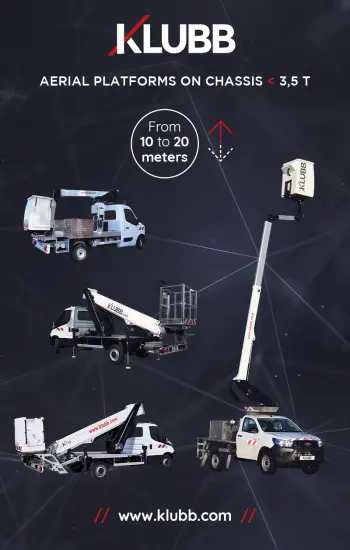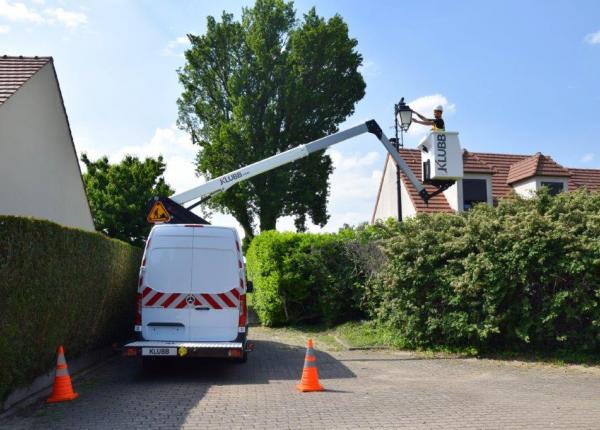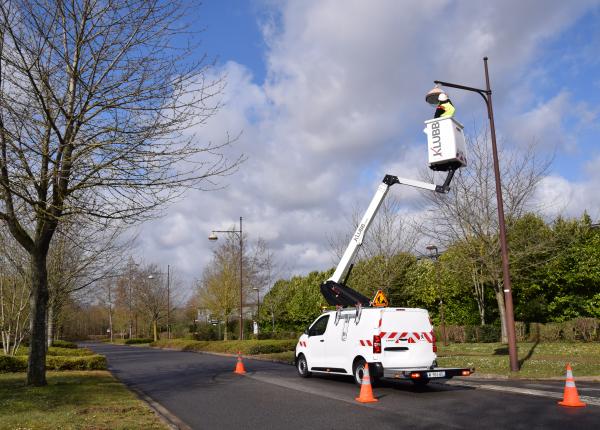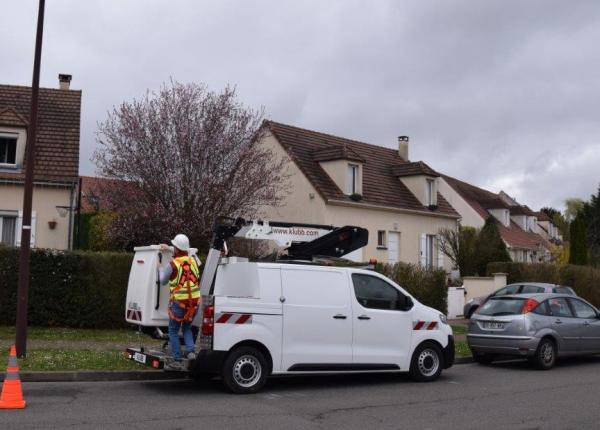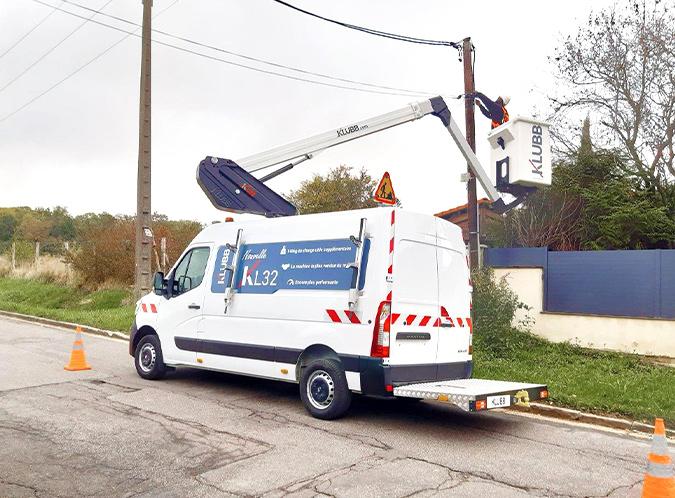
Operating aerial work platforms (AWPs) can be a challenging and hazardous job, which is why proper training is essential to ensure the safety of workers and the public. AWPs are commonly used in various industries such as construction, maintenance, and transportation to perform tasks at heights that are unreachable by other means. The training required for workers who operate AWPs covers a broad range of topics, including equipment inspection, safe operation, emergency procedures, and fall protection. This blog post will explore the different types of training that are necessary for workers to operate AWPs safely and efficiently.
Importance of following training before using aerial work platform
Training is crucial for workers who operate aerial work platforms because it helps to ensure their safety and the safety of those around them. Here are some reasons why training is important:
- Prevents accidents: Operating aerial work platforms can be dangerous if not done correctly. Proper training can help prevent accidents and injuries by teaching workers how to operate the equipment safely and how to identify potential hazards.
- Compliance with regulations: Organisations like OSHA or IPAF require employers to ensure that their workers are properly trained before operating aerial work platforms. By providing training, employers can ensure that they are complying with regulatory requirements and avoid potential fines or penalties.
- Increases productivity: Workers who are properly trained in operating aerial work platforms can perform their tasks more efficiently and effectively. This can lead to increased productivity and a safer work environment.
- Builds confidence: Adequate training can build workers' confidence in their ability to operate aerial work platforms safely and efficiently. This can lead to a more positive work environment and increased job satisfaction.
- Reduces liability: In the event of an accident, employers may be held liable for injuries or property damage. Providing proper training can help reduce the risk of accidents and injuries, which can help protect employers from potential lawsuits.
Training and Types of Aerial Work Platforms
The training required for workers who operate aerial work platforms may vary depending on the specific type of equipment being used. Different types of aerial work platforms have different characteristics, capabilities, and limitations, and therefore require different types of training.
For example, the training required for workers who operate scissor lifts may differ from the training required for those who operate boom lifts or cherry pickers. Similarly, workers who operate specialized equipment such as mast climbers or suspended scaffolds may require different types of training than those who operate more common types of aerial work platforms.
It is important for employers to identify the specific types of equipment that their workers will be using and provide training that is specific to each type. This can help ensure that workers are able to operate the equipment safely and efficiently, and that they are prepared to handle any potential hazards or challenges that may arise while on the job.
What types of training are required for workers who operate aerial work platforms?
Workers who operate aerial work platforms (AWPs) must receive specialized training to ensure they can safely and effectively operate these machines. Aerial work platforms, such as scissor lifts and boom lifts, are commonly used in construction, maintenance, and other industries where workers need to work at heights.
Operating an AWP requires knowledge of the machine's unique features, safety procedures, and regulations that govern their use. Different types of training, including classroom training, practical training, equipment-specific training, rescue and emergency training, and refresher training, are necessary to ensure that AWP operators can perform their jobs safely and reduce the risk of accidents or injuries in the workplace.
Here are some types of training that are typically required for AWP operators:
Classroom Training:
- Theory and principles of operating an AWP
- Machine components and safety features
- Hazards associated with aerial work
- Regulations that govern AWP operation
Practical Training
- Hands-on experience with operating an AWP
- Training on how to operate the machine safely and effectively
- Inspection procedures for ensuring AWP safety
- Navigation of different types of terrain
Equipment-Specific Training
- Training specific to the type of AWP being operated
- Familiarization with unique features, controls, and safety systems
- Proper use and maintenance of the specific type of AWP
Rescue and Emergency Training
- Emergency procedures in case of accidents or incidents
- Rescue techniques and first aid
- How to safely rescue oneself and others in an emergency
Refresher Training
- Ongoing training opportunities to maintain skills and knowledge
- Regular refresher training to ensure workers are up-to-date with new technology, regulations, and safety procedures
- Additional training for workers who have not operated AWPs for an extended period.
Remember that it's your employer's responsibility to ensure that you receive the necessary training and that you are competent to operate the equipment safely.
Frequency of training required
If you are an aerial work platform operator, you must receive initial training before using the equipment. You should also receive refresher training periodically to keep your skills and knowledge up to date. The frequency of refresher training depends on factors such as the frequency of equipment use, changes in the work environment, and your experience.
If there are changes in the work environment or equipment being used, or if you are observed operating the equipment unsafely, you should receive retraining. OSHA recommends that employers provide refresher training for aerial work platform operators at At least once every three years, but the frequency of training may vary based on the unique factors of your work environment.
It's important to note that ongoing education and training about best practices for aerial work platform operation and safety are also important for your safety and the safety of those around you. Employers have a responsibility to provide a comprehensive training program that includes initial training, refresher training, and ongoing education to ensure that their workers are competent and capable of operating aerial work platforms safely.
There are several regulations and guidelines that govern the use of aerial work platforms (AWPs) to ensure the safety of workers and prevent accidents. Here's an overview of some of the most important regulations and guidelines in the world :
American and Canadian
- OSHA regulations: The Occupational Safety and Health Administration (OSHA) has several regulations that apply to AWPs, including the requirement that employers provide AWP operator training and that workers wear appropriate personal protective equipment (PPE).
- ANSI standards: The American National Standards Institute (ANSI) has developed standards for the design, testing, and use of AWPs. ANSI standards cover topics such as design requirements, load capacities, and safety features.
- CSA standards: The Canadian Standards Association (CSA) has also developed standards for the design and use of AWPs. CSA standards cover topics such as design requirements, testing procedures, and safe use.
- Manufacturer guidelines: AWP manufacturers provide guidelines and recommendations for the safe use and maintenance of their machines. These guidelines cover topics such as proper use of the machine, inspection procedures, and maintenance requirements.
- Industry-specific guidelines: Some industries have developed specific guidelines for the safe use of AWPs. For example, the International Powered Access Federation (IPAF) has developed guidelines for the safe use of AWPs in the construction industry.
European
- European Machinery Directive: The Machinery Directive applies to all machinery, including AWPs, sold or put into service in the European Union. It sets out the essential health and safety requirements that must be met for machinery to be placed on the market or put into service.
- European Standard EN 280: EN 280 is a European standard that sets out safety requirements for mobile elevating work platforms, including AWPs. The standard covers topics such as stability, guardrails, and emergency lowering systems.
- European Standard EN 1808: EN 1808 is a European standard that provides guidelines for the safe use of AWPs. It covers topics such as inspection procedures, fall protection, and rescue procedures.
- IPAF PAL Card: The International Powered Access Federation (IPAF) PAL Card is a certification program for AWP operators that is recognized throughout Europe. The program provides training on the safe use of AWPs and issues a PAL Card to operators who successfully complete the program.
Asian
- Singapore Standard SS 616: The Singapore Standard SS 616 provides guidelines for the safe use of mobile elevating work platforms (MEWPs), including AWPs. The standard covers topics such as design requirements, inspection procedures, and emergency procedures.
- Occupational Safety and Health Standards in Japan: Japan has a set of occupational safety and health standards that apply to the use of AWPs. These standards cover topics such as the design and construction of the machine, inspection and maintenance requirements, and the qualifications of the operator.
- China's Safe Use of Work Equipment Regulation: China's Safe Use of Work Equipment Regulation provides guidelines for the safe use of equipment, including AWPs. The regulation covers topics such as the design and manufacture of the machine, inspection and maintenance requirements, and training and qualification requirements for operators.
- Australian Standards: While not technically in Asia, Australia is a neighboring country and has developed a set of standards for the safe use of AWPs. These standards cover topics such as design and testing requirements, safety features, and training and qualification requirements for operators.
Importance of following them
Compliance with regulations and guidelines related to aerial work platforms (AWPs) is crucial to ensure the safety of workers and prevent accidents in the workplace. For instance, in the United States, the Occupational Safety and Health Administration (OSHA) sets and enforces workplace safety standards, including those related to the use of AWPs. In Europe, the European Committee for Standardization (CEN) develops and sets standards for various industries, including AWPs.
AWPs are sophisticated machines that require specialized training to operate safely, and non-compliance with regulations and guidelines can result in accidents that may cause severe injuries or fatalities. Adherence to regulations and guidelines can help to prevent accidents by ensuring that workers are adequately trained to operate AWPs, that the machines are maintained and inspected regularly, and that safety features are in place and functioning properly.
For instance, guidelines may comprise requirements for the use of personal protective equipment (PPE) such as harnesses or hard hats, or for the implementation of safety features such as guardrails or emergency shut-off switches. The International Powered Access Federation (IPAF) is an international trade organization that provides training and certification for operators of AWPs.
In addition to promoting worker safety, compliance with regulations and guidelines can also help to prevent legal and financial liabilities. Employers who fail to follow regulations and guidelines may be subject to fines or legal action and may face reputational damage if accidents occur in their workplace.
Conclusion
In conclusion, operating an aerial work platform (AWP) can be a complex and potentially dangerous task, which is why it is essential to provide workers with proper training. AWP operators must be trained in a variety of areas, including the safe use of the equipment, emergency procedures, hazard identification and avoidance, and proper use of personal protective equipment. Different types of AWPs may require different types of training, and regulations and guidelines may vary depending on the location and industry. Adherence to regulations and guidelines, as well as ongoing training and re-certification, can help to prevent accidents and injuries, protect workers' health and safety, and avoid legal and financial liabilities for employers. By investing in training for AWP operators, employers can create a safer and more productive workplace for everyone.

